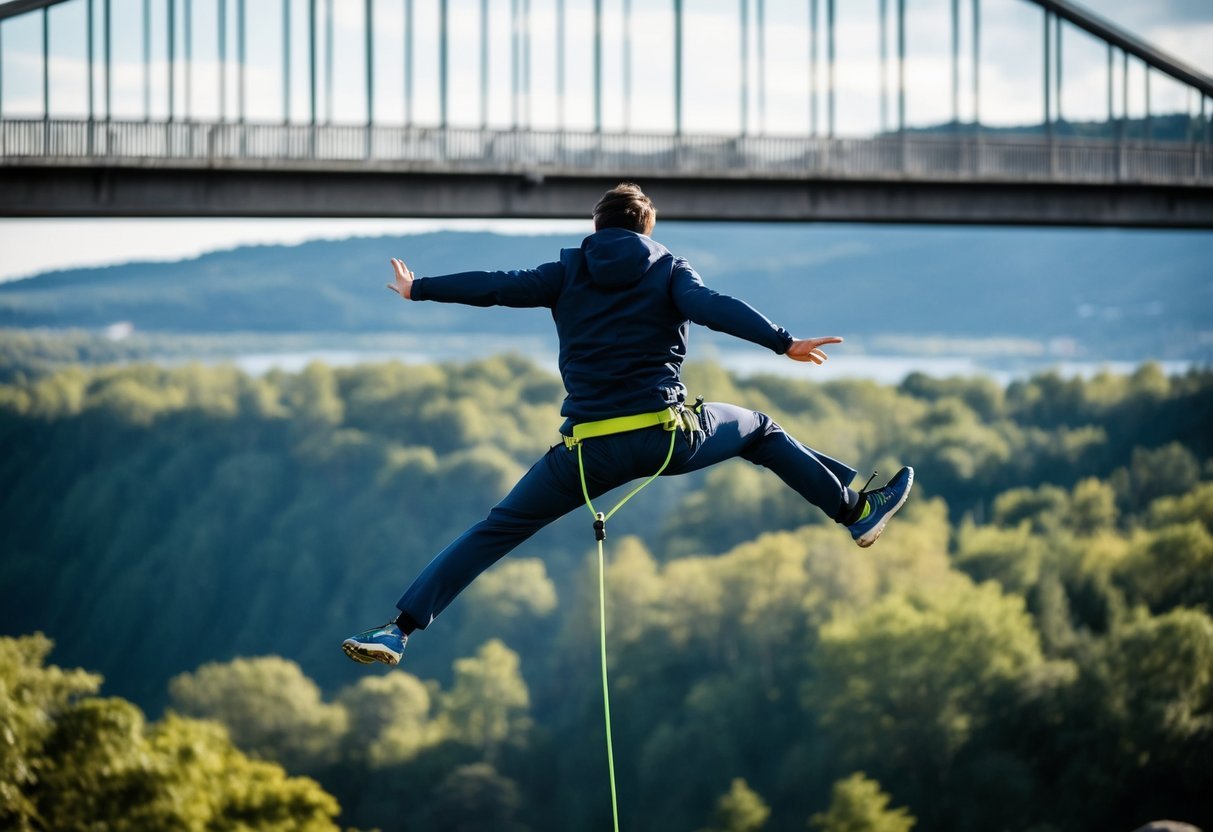Bungee jumping is an adrenaline-pumping extreme sport that has captured the hearts of thrill-seekers worldwide.
As you prepare to take the plunge, have you ever wondered about the fascinating history behind this daring activity?
From ancient rituals to modern-day adventures, bungee jumping has evolved in surprising ways. You’ll be amazed to discover the unexpected origins and little-known facts about this heart-racing sport. Get ready to dive into the thrilling world of bungee jumping and uncover some intriguing tidbits that will make your next jump even more exciting.
1) Vanuatu Land Diving Ritual
Ever heard of land diving? It’s the OG bungee jumping, and it’s way more intense than you might think.
This crazy tradition comes from Pentecost Island in Vanuatu, where locals have been doing it for centuries.
Picture this: guys climbing up wooden towers as high as 100 feet, with nothing but tree vines tied to their ankles.
Then they just… jump.
Yep, you read that right.
This ritual is a rite of passage for men on the island.
It’s also supposed to ensure a good yam harvest.
Talk about high stakes, right?
The coolest part? This tradition inspired modern bungee jumping.
A New Zealander named AJ Hackett saw it and thought, “Hey, I could make a sport out of this!”
If you’re ever in Vanuatu between April and June, you might catch one of these land-diving ceremonies.
Just don’t try it yourself – these guys are pros who’ve been training for years.
2) New Zealand’s AJ Hackett’s First Jump
You might think bungee jumping started with a daredevil leaping off the Eiffel Tower, but that’s not quite right.
AJ Hackett’s first commercial jump actually happened closer to home.
In 1986, Hackett and his buddy Henry van Asch set up shop at the Kawarau Bridge in Queenstown.
This 43-meter drop became the world’s first commercial bungee site.
Talk about a game-changer!
But Hackett wasn’t done pushing boundaries.
In 1987, he pulled off a jaw-dropping stunt at the Eiffel Tower.
Picture this: Hackett and his team sneaking onto the tower at night, hiding until dawn, then Hackett taking the plunge from 110 meters up.
This crazy leap put bungee jumping on the global map.
Hackett called it “one small step for a man, a bloody great leap for the adventure tourism industry.” He wasn’t wrong!
Today, you can still jump from that original Kawarau Bridge site.
It’s like diving into a piece of adrenaline-fueled history.
How’s that for an extreme sports bucket list item?
3) Inspired by Ancient Jungle Tribes
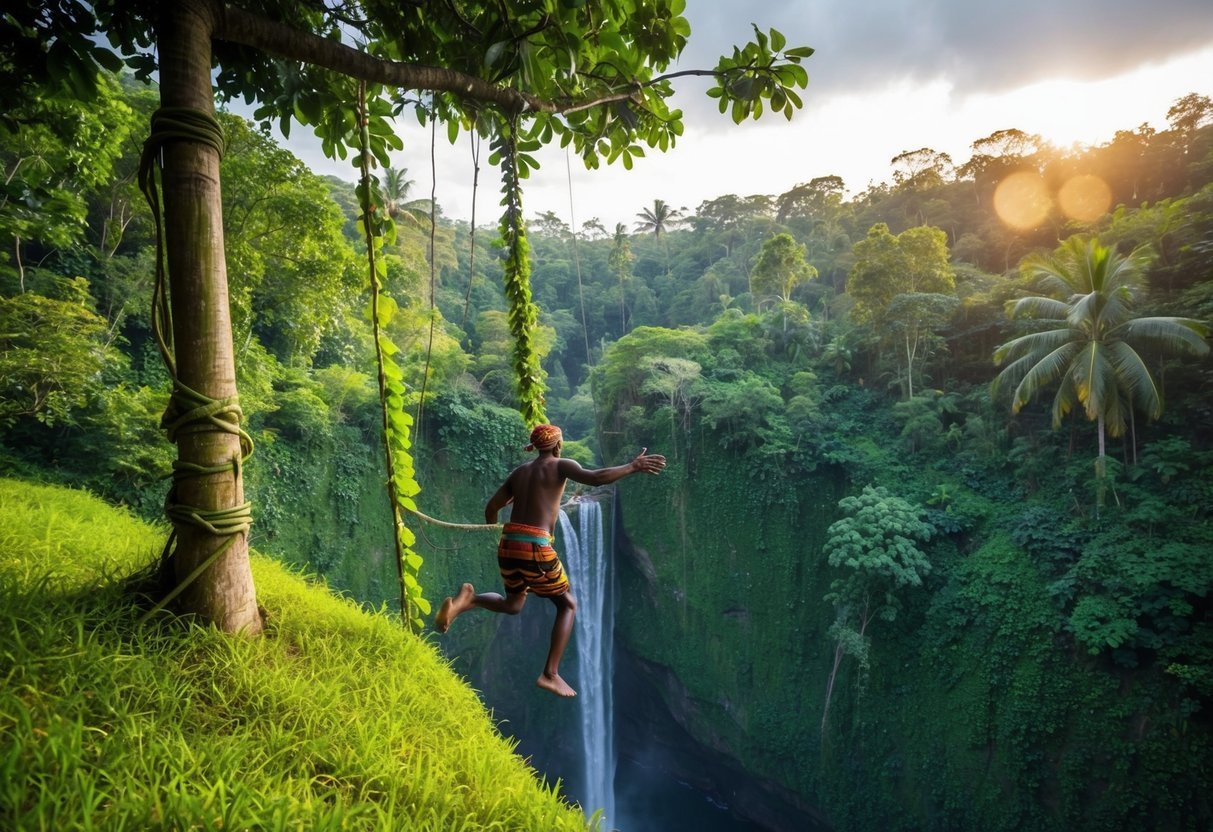
You might think bungee jumping is a modern invention, but its roots go way back.
The inspiration came from an ancient practice in Vanuatu, a small island nation in the South Pacific.
The Vanuatuan land divers have been jumping from tall wooden towers for centuries.
These brave souls tie vines to their ankles and leap headfirst towards the ground.
It’s not just for thrills – it’s a sacred ritual and rite of passage.
In the 1970s, members of the Oxford University Dangerous Sports Club caught wind of this practice.
They were so impressed that they decided to recreate it with modern materials.
That’s how bungee jumping as we know it today was born.
The next time you’re standing on a platform, elastic cord attached to your ankles, remember you’re part of a tradition that’s been around for ages.
You’re following in the footsteps of those daring islanders who’ve been diving from 100-foot towers long before bungee jumping became a popular extreme sport.
4) The Oxford University Dangerous Sports Club
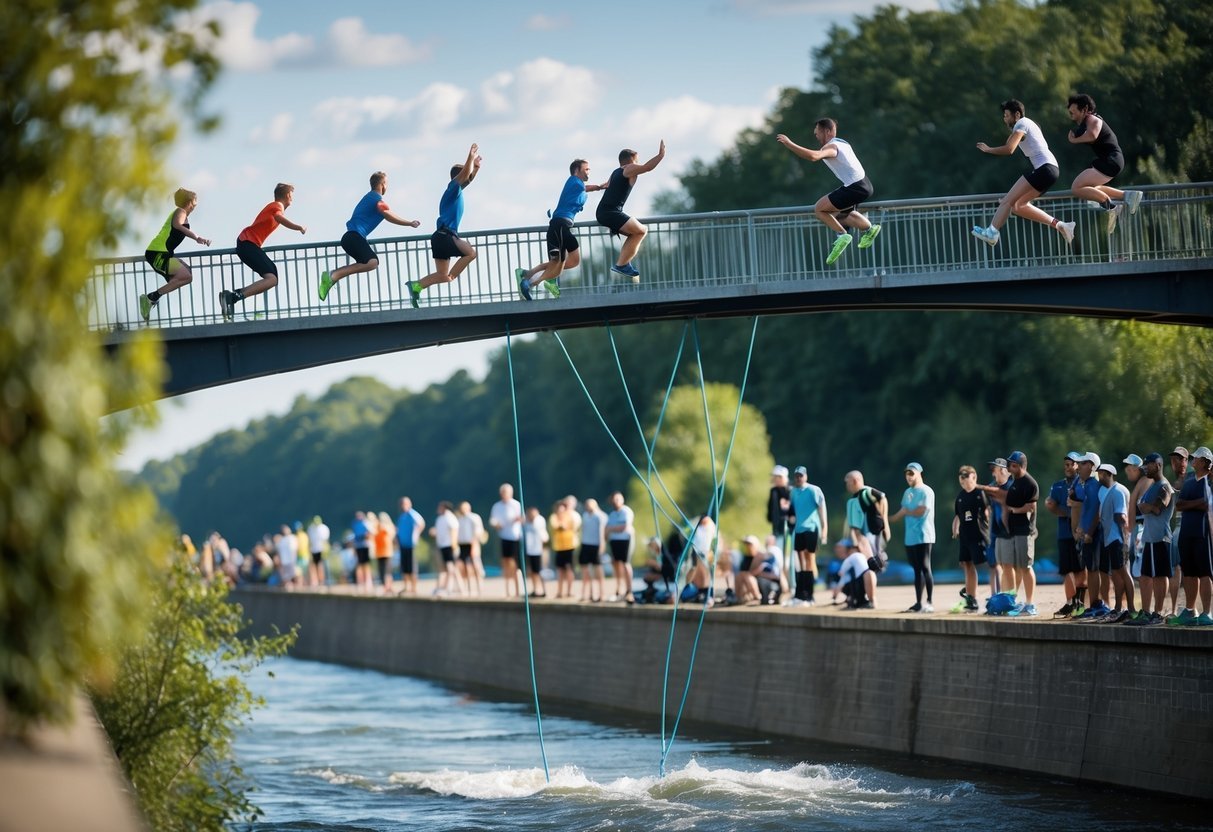
You might not know it, but bungee jumping owes its popularity to a group of thrill-seeking students from Oxford University.
The Dangerous Sports Club was formed in the late 1970s by a bunch of adventurous souls looking for their next adrenaline fix.
These guys weren’t your average college crowd.
They had a flair for the dramatic, often dressing in formal wear for their wild stunts.
Imagine jumping off a bridge in a tuxedo!
The club’s founder, David Kirke, was the mastermind behind many of their craziest ideas.
He and his pals didn’t just stop at bungee jumping.
They tried all sorts of wild activities, like sending a grand piano down ski slopes and skateboarding with bulls in Pamplona.
But it was their bungee jumping antics that really caught the world’s attention.
In 1979, they made headlines by leaping from Bristol’s Clifton Suspension Bridge.
This daring act kickstarted the bungee jumping craze we know today.
The Dangerous Sports Club didn’t just push boundaries – they obliterated them.
Their legacy lives on in the world of extreme sports, inspiring thrill-seekers everywhere to chase that next big rush.
5) Bungee as a Modern Adventure Sport
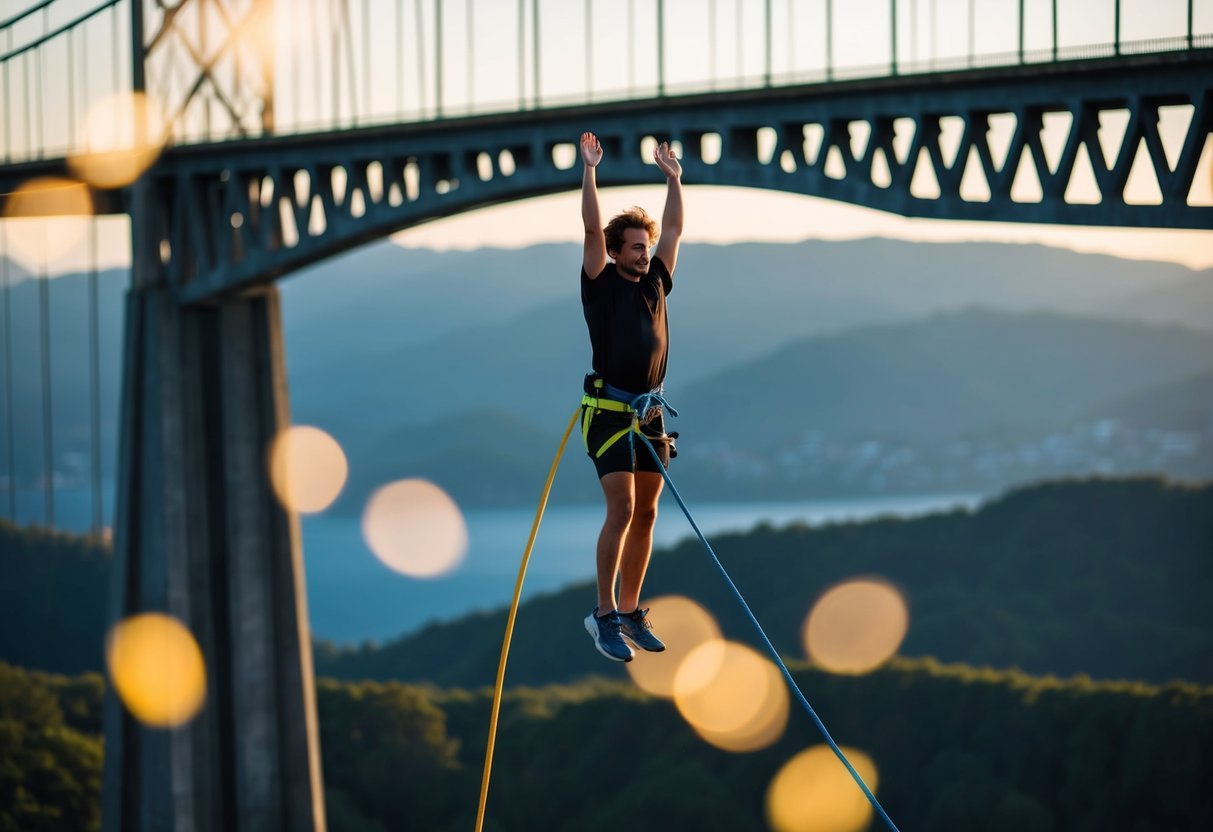
You might think bungee jumping is an ancient practice, but its modern form is actually pretty recent.
The sport as we know it today kicked off in the 1970s with a group of daredevils from Oxford University.
These thrill-seekers took inspiration from the land diving ritual of Vanuatu and decided to give it a modern twist.
They swapped out vines for elastic cords and made their first jump from the Clifton Suspension Bridge in Bristol, UK.
The sport quickly caught on, spreading across the globe like wildfire.
In the 1980s, A.J. Hackett became a key figure in popularizing bungee jumping.
He set up the world’s first commercial bungee site in New Zealand in 1988.
Today, you can find bungee jumping spots all over the world.
From bridges to cranes, and even hot air balloons, the options are endless.
The sport has evolved to include variations like tandem jumps and night jumps.
Bungee jumping has become a bucket list item for many adventure seekers.
It’s not just about the thrill – it’s also about conquering your fears and pushing your limits.
6) World Record: 764 Bungee Jumps in One Day
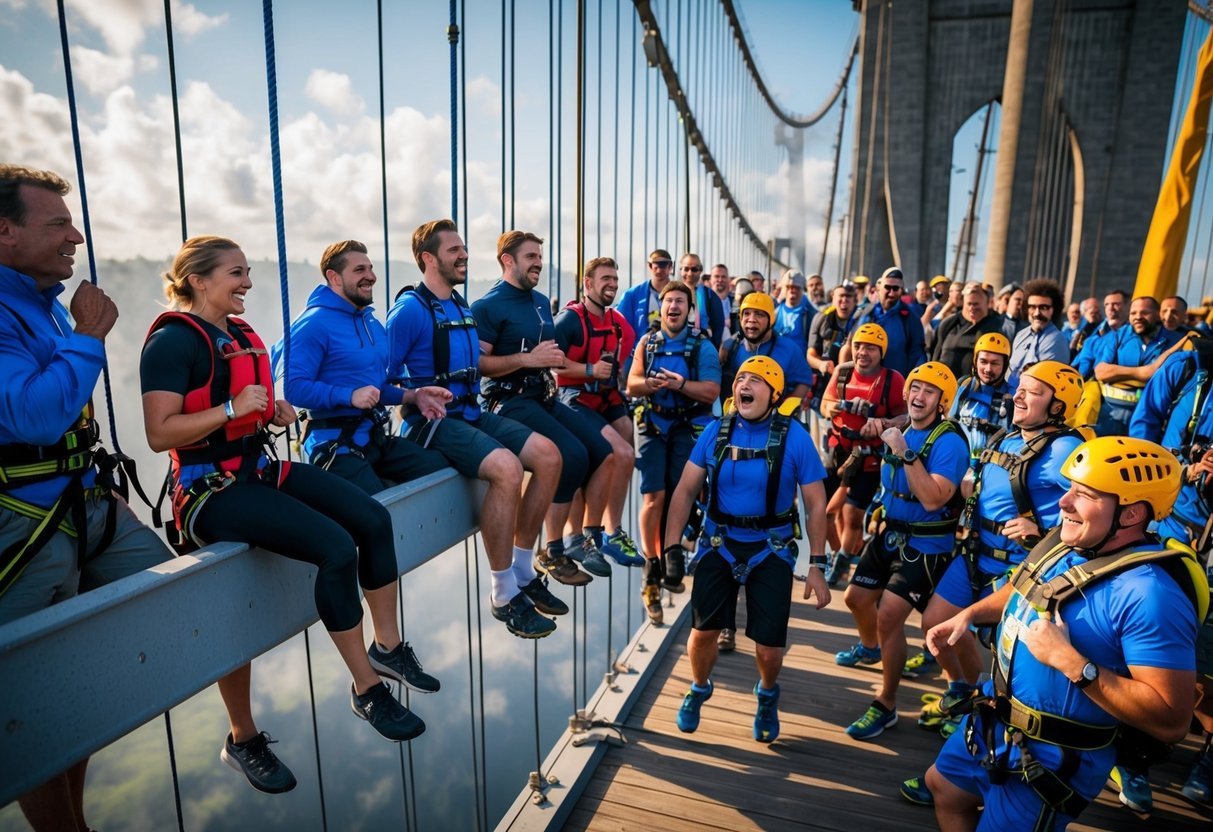
Think you’ve got what it takes to break a bungee jumping world record? You might want to reconsider after hearing about this incredible feat.
In 2022, a daredevil named Francois-Marie Dibon completed an astounding 765 bungee jumps in just 24 hours.
That’s more than one jump every two minutes!
The record-breaking event took place at Garry Bridge in Perthshire, Scotland.
Dibon, a 44-year-old Frenchman, pushed his body and mind to the limit to achieve this jaw-dropping accomplishment.
You might be wondering how someone could physically endure so many jumps.
Well, Dibon had to maintain intense focus and stamina throughout the day and night.
This feat shattered the previous record of 430 jumps set in 2017.
It just goes to show how far extreme sports enthusiasts are willing to go to push the boundaries of what’s possible.
Next time you’re considering a bungee jump, remember Dibon’s incredible achievement.
While you probably won’t be attempting 765 jumps, even one leap can give you an unforgettable adrenaline rush.
The Ancient Roots of Bungee Jumping

Bungee jumping’s origins stretch back centuries, rooted in an ancient ritual practiced on a remote Pacific island.
This daring tradition laid the groundwork for the modern extreme sport we know today.
Vanuatu Land Diving Traditions
On Pentecost Island in Vanuatu, a unique custom called Naghol or land diving has been practiced for generations.
Young men build towering wooden structures, sometimes reaching heights of 100 feet or more.
They tie vines to their ankles and leap headfirst towards the ground.
This ritual serves as a test of courage and a rite of passage.
The vines are carefully selected and measured to ensure they’re just long enough to stop the diver inches from the ground.
It’s a hair-raising spectacle that showcases incredible bravery and precision.
The Cultural Significance
For the people of Pentecost Island, land diving is more than just an adrenaline rush.
It’s deeply woven into their cultural fabric.
The ritual is believed to ensure a bountiful yam harvest, a staple crop for the islanders.
Legend has it that the practice began when a woman, fleeing her abusive husband, climbed a tree and jumped with vines tied to her ankles.
Her husband followed but didn’t use vines and met a tragic end.
This tale emphasizes the importance of preparation and skill in the ritual.
The Naghol ceremony also serves as a powerful coming-of-age ritual for young men.
It’s a way to prove their courage and earn respect within the community.
When you witness this ancient tradition, you’re seeing the roots of modern bungee jumping in action.
Modern Revival of Bungee Jumping
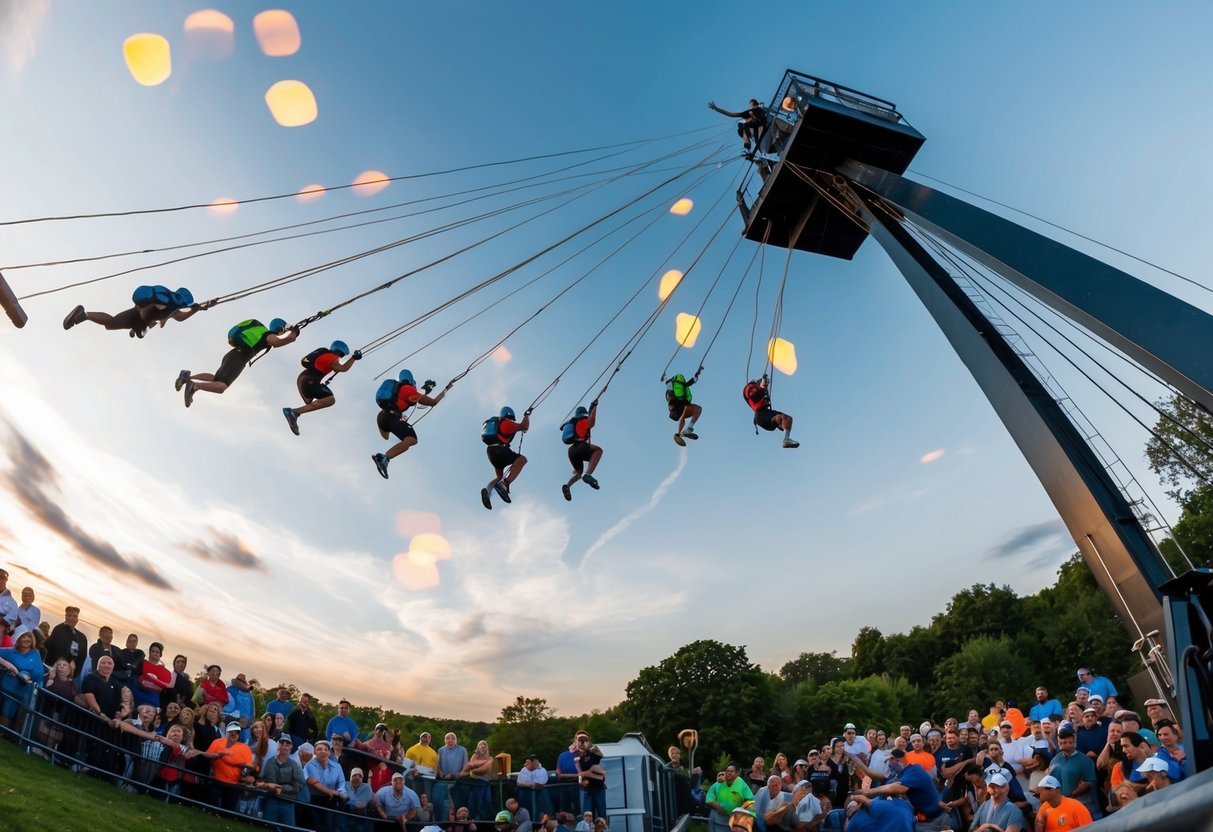
The thrill of bungee jumping was rediscovered in the late 20th century, sparking a global sensation.
Adventure seekers pushed boundaries and transformed an ancient practice into a modern extreme sport.
1980s Adventure Sports Movement
You might not know that bungee jumping’s comeback started with a bang in the 1980s.
Adrenaline junkies were always on the lookout for the next big thrill, and bungee jumping fit the bill perfectly.
The concept of recreational bungee jumping gained traction as adventurers sought new ways to push their limits.
It wasn’t just about the fall – it was about conquering fear and experiencing a unique rush.
As word spread, makeshift bungee sites popped up around the world.
Bridges, cranes, and even hot air balloons became launching pads for daring jumpers.
Influence of the Oxford Dangerous Sports Club
You’ve got to hand it to the Oxford University Dangerous Sports Club – they really kicked things up a notch.
These thrill-seekers weren’t content with traditional sports, so they decided to create their own heart-pounding activities.
In 1979, club members made history with the first modern bungee jump from Bristol’s Clifton Suspension Bridge.
Talk about a leap of faith! Their stunt caught media attention and sparked worldwide interest.
The club’s antics didn’t stop there.
They organized jumps from various locations, each more daring than the last.
Their escapades inspired others to take the plunge, quite literally.
As bungee jumping gained popularity, safety measures improved.
Professional operators emerged, making the sport more accessible to adventure-hungry folks like you.
Frequently Asked Questions
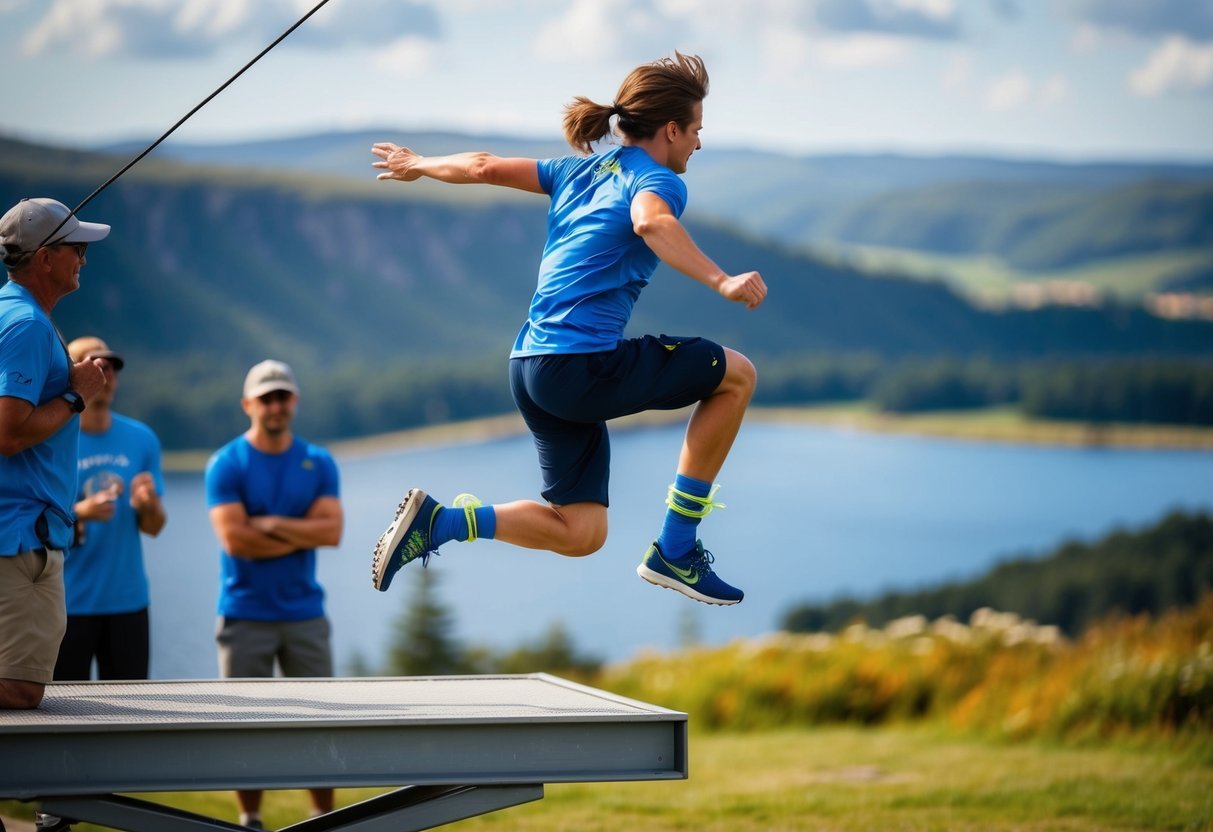
Bungee jumping’s origins are steeped in fascinating history and daring innovation.
Let’s explore some key aspects of how this thrilling sport came to be.
When was the first modern bungee jump made?
The first modern bungee jump took place on April 1, 1979.
Members of the Oxford University Dangerous Sports Club made this groundbreaking leap from the Clifton Suspension Bridge in Bristol, England.
Who is credited with inventing bungee jumping?
While no single person invented bungee jumping, A.J. Hackett is often credited with popularizing it as a commercial sport.
Hackett’s daring jump from the Eiffel Tower in 1987 catapulted bungee jumping into the global spotlight.
Where was bungee jumping’s first ever commercial jump location?
The first commercial bungee jumping site opened in 1988.
A.J. Hackett established this pioneering operation at the Kawarau Bridge in Queenstown, New Zealand.
What inspired the modern practice of bungee jumping?
The modern practice of bungee jumping was inspired by the land diving ritual of Vanuatu.
This ancient tradition, known as Naghol, involves men jumping from tall wooden towers with vines tied to their ankles.
How has bungee jumping equipment evolved since its inception?
Bungee jumping equipment has come a long way since its early days.
Modern jumpers now use specially designed elastic cords, safety harnesses, and sophisticated rigging systems.
These improvements have greatly enhanced the safety and reliability of the sport.
What role did indigenous rituals play in the development of bungee jumping?
Indigenous rituals, particularly the Naghol ceremony of Vanuatu, played a crucial role in inspiring modern bungee jumping.
This centuries-old practice caught the attention of Western visitors.
It ultimately led to the development of bungee jumping as we know it today.


